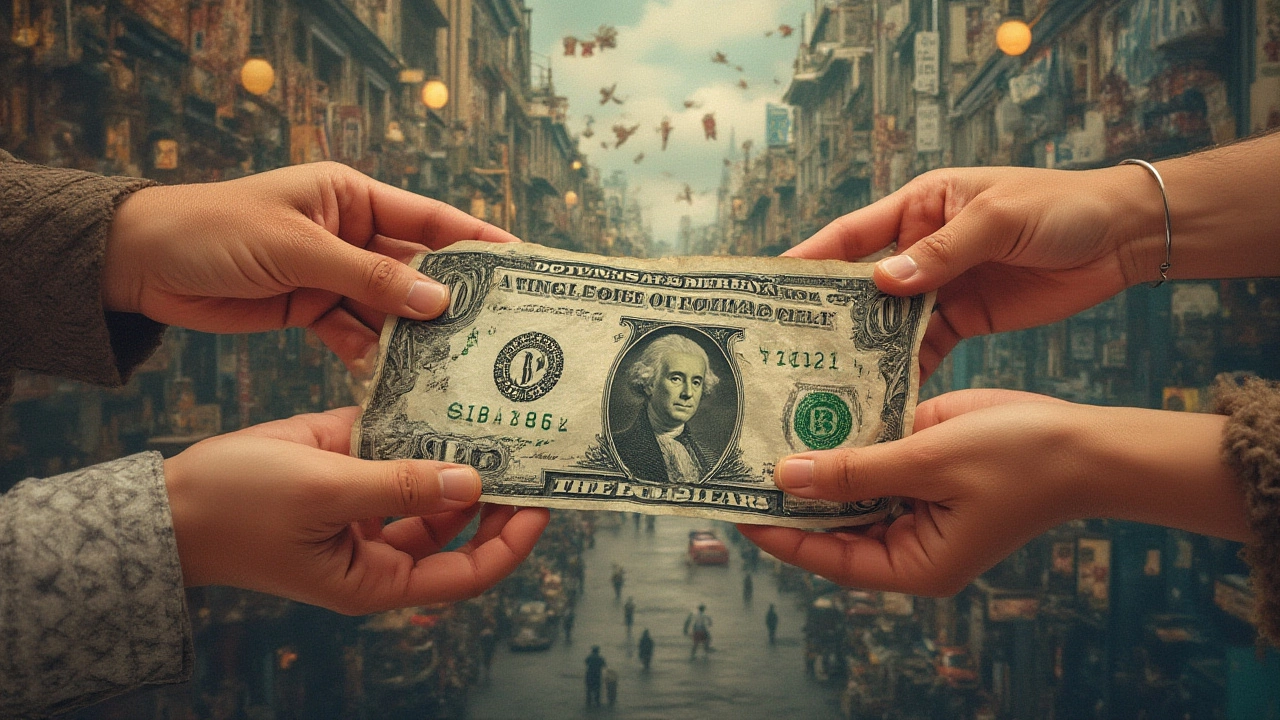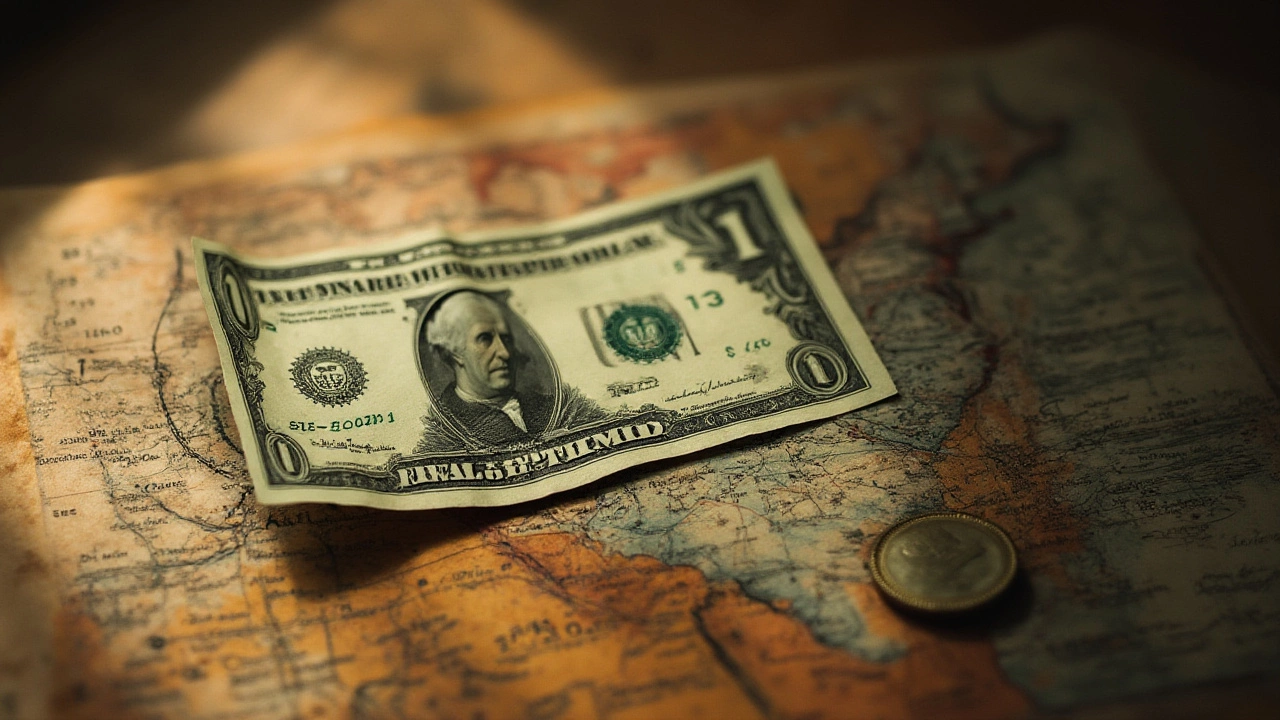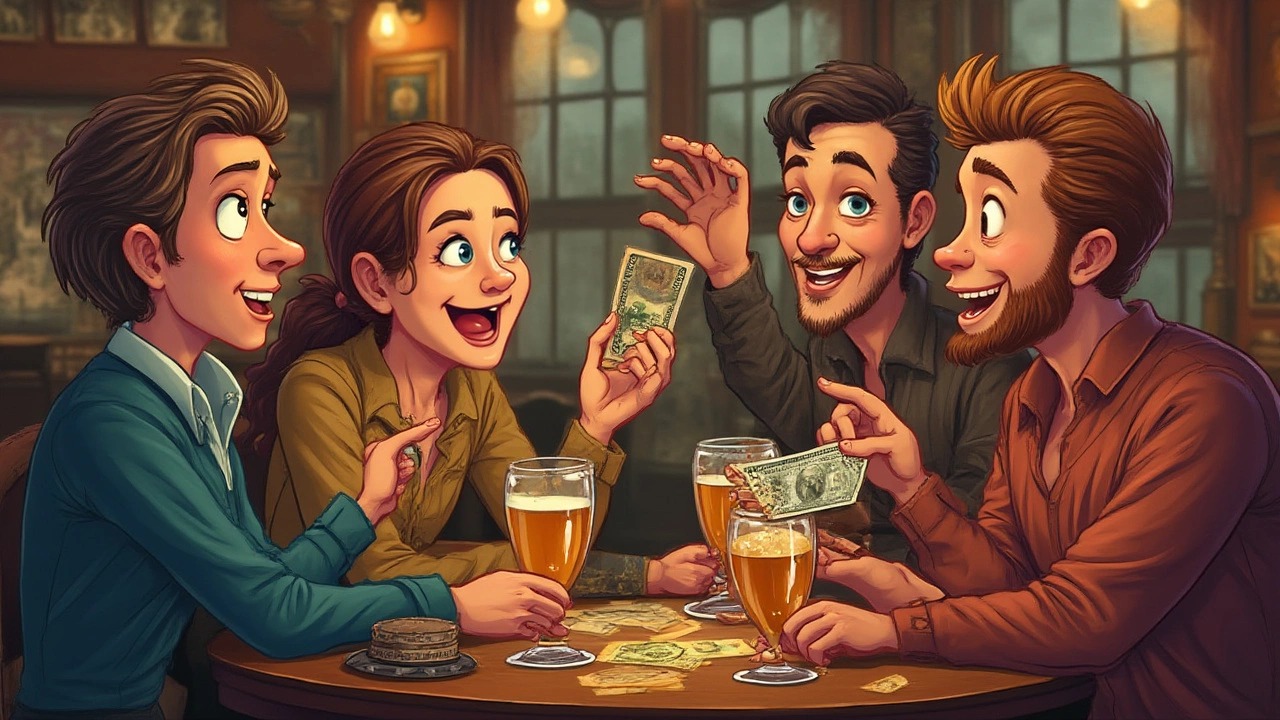What Is a $20 Bill Called? All You Need to Know About the Twenty Dollar Bill
 Jul, 15 2025
Jul, 15 2025
Crack open your wallet. Odds are, the brightest bill hiding inside is a twenty. Quick, though—what do you call it? If you're stalling, join the club. Sure, everyone knows it's a $20 bill. But ask a bartender, a cabbie, or a street vendor, and you'll hear some surprising nicknames flying around. The $20 bill has a history, a culture, and a place in American wallets that might just surprise you.
Common Names and Slang for the $20 Bill
The most basic label, of course, is the "twenty." Just about everyone from teens at the mall to grandparents at the checkout counter says, “Hand me a twenty.” But here’s where it gets interesting: while the $1 is a “buck,” the $10 can be a “sawbuck,” and the $100 has “C-note” swagger, the humble $20 has its own colorful language.
For decades, it’s been called a “Jackson,” a hat-tip to the bill’s portrait of President Andrew Jackson since 1929. Pop into a pool hall or diner, and you’ll hear, “Can you break a Jackson?” That’s pretty standard, but head north of the border, and you might hear someone call their $20 a “double sawbuck,” which plays on the old nickname for a ten-dollar bill. Got twenty? That’s two sawbucks, plain and simple.
Funny enough, there’s not as much variety in $20 bill slang as there is with other denominations. Most of us just say “twenty.” If you spot a rare “double eagle” reference, that’s a throwback to gold coin days and mostly old-timer talk now, if you hear it at all. On occasion, someone might even call it “two tens,” but that’s more about math than culture.
One fun bit: Some younger folks have taken to calling it a “Dub,” short for “double,” because twenty is double ten. Catchy, right? What you call it might depend on your region or even your friend group. But make no mistake—the $20 is everywhere, and it’s got a personality all its own.
The History of the $20 Bill in America
Let’s dig into the journey of the $20 bill itself. This denomination’s been around since the early 1800s. Back when folks paid in gold or silver, $20 was a giant chunk of change. The first $20 notes came out in 1861 from the federal government, and they looked nothing like today’s bills—ornate, oversized, with different people and symbols. It was the Wild West of currency.
In 1929, American bills shrank down to their current size, and Andrew Jackson’s face landed on the $20. Why Jackson? He was the seventh U.S. President and an advocate for the "common man" (though, not without controversy). Before that, Alexander Hamilton—the guy on the ten—actually appeared on the twenty for a while. Designs changed a lot through the years based on political flavors and security needs.
Speaking of security, the $20 bill has seen more changes than almost any other note, especially over the past 30 years. Starting in the late 1990s, the Treasury decided to give bills bold colors, watermarks, and security threads to outsmart counterfeiters. The $20 was one of the first to get the color makeover in 2003. If you flip a modern bill under light, you'll find a security thread that glows green and a watermark of Jackson’s face.
Take a look at today’s wallets. The $20 is right behind the $1 in popularity—Americans withdraw more twenties from ATMs than any other bill. It’s not too big, not too small—just the right size for groceries, gas, or a quick bite to eat. Here’s how circulation of U.S. bills stacks up:
| Denomination | Number in Circulation (2024) |
|---|---|
| $1 Bill | 13.1 billion |
| $20 Bill | 11.2 billion |
| $10 Bill | 2.3 billion |
| $100 Bill | 18.5 billion |
For a while, people thought Harriet Tubman would replace Andrew Jackson, and the debate surfaced again in recent years. That’s still up in the air—if it happens, don’t be shocked if new slang appears.

Notable Features and How to Spot a Real Bill
Ever worry about fake bills? Counterfeiters love twenties. They’re common enough to slip by clerks but valuable enough to be worth the trouble. Knowing what to look for is useful—even if you’re not running a cash register.
Start with the feel. Genuine twenties use a unique cotton-linen blend. It crinkles but doesn’t tear easily, and the raised ink lets you ‘feel’ some of the image. Then, there’s the color—modern $20s have subtle peach and green tones, especially around Jackson’s portrait and the “20” numerals.
Next up, security features. Hold the bill up to light. Look for two things:
- A faint image of Andrew Jackson peeking through an empty oval beside the printed image—this watermark matches the portrait.
- A vertical plastic security thread to Jackson’s left (your right)—it glows bright green under UV light and is stamped “USA TWENTY.”
Flip it, and you’ll also find color-shifting ink. The big “20” in the lower right corner looks copper when flat but shifts to green when you tilt it.
Still not convinced? Check out microprinting. Tiny words like “USA20” appear in several places—so small, you’ll need a magnifier. Most counterfeiters skip these because special presses are needed.
Jack up your anti-fake radar by comparing the suspect bill with a known-real one from the bank. Any blurring, funny colors, or mismatched watermarks, and you might want to pass on the transaction.
Store managers and restaurant servers sometimes use counterfeit-detecting pens—but security features on the bill itself are the real deal for spotting fakes.
Famous Facts and Stories About the Twenty
The $20 is woven into American pop culture. In movies, the main character hands over a twenty for pizza or tips a hotel bellhop. There’s something satisfying about the crisp green rectangle—just big enough to impress, not so big it draws attention.
Maybe that’s why so many people tuck twenties in birthday cards—or use them as good luck charms. According to a 2024 consumer survey, giving twenties as gifts ranks almost as high as gift cards.
Artists and pranksters alike have played with the bill’s design. Some creative types fold $20 bills so Jackson seems to grin or frown, and you can find tutorials online for "bill origami" using twenties. A few bars still offer “Jackson Specials” for drinks—hand over a twenty and get a deal on shots for the group.
But not everything about the $20 is light-hearted. Remember, Andrew Jackson is a controversial figure. He signed the Indian Removal Act and owned slaves, which has sparked ongoing debate about who should be on the bill. When rumors flew that Harriet Tubman would take Jackson’s place, talk shows and news cycles went wild. As of 2025, Jackson’s still there, but history might change soon.
Another odd story? In 2004, a Texas man discovered a micro-engraving in his $20—turns out, it was just official microprinting, but the conspiracy theories flooded the internet for months. The $20 even found its way into tech—early Bitcoin fans often used the phrase "a pizza costs a twenty" to explain crypto to newcomers.

Smart Ways to Handle and Use Your Bill
So you’ve got a twenty burning a hole in your pocket. How do you put it to good use? It pays attention to more than just the price. Big chain stores and fast food joints usually have no trouble with twenties, but some smaller businesses will eye you warily if the bill looks wrinkled or too crisp. Ever get a $20 that looked freshly printed, and the cashier gave it a long stare? They know what to watch for—and now you do, too.
Want to keep your twenties in top shape? Folding bills for wallets is fine, but too much bending or stashing in back pockets can leave them ripped. A ragged twenty might get rejected, even if it’s real. Pro tip: If your twenty ends up torn, you can take it to the bank (as long as at least half the bill is intact) and get a new one.
If you’re trying to save money, twenties are a solid chunk—carry cash instead of swiping cards, and you’ll likely spend less. Plus, twenties are handy for splitting checks when you’re out with friends. Nobody wants to deal with a stack of ones or tens in those moments. Some folks even use a ‘twenty trick’ for budgeting: keep only one $20 bill in your wallet and don’t break it unless you absolutely have to. You’ll be surprised how hard it is to part with a crisp Jackson.
Finally, think about travel. Abroad, U.S. $20 bills are often the easiest to exchange. Many countries prefer twenties or hundreds, and banks will sometimes turn away older or damaged notes. If you’re heading overseas, bring fresh-looking twenties—less hassle at the exchange desk, and you won’t get stuck with unusable cash.
So whether you call it a $20 bill, a twenty, a Jackson, or a dub, this paper rectangle packs a serious punch in daily life. Next time you hand one over, take a second to appreciate the stories, history, and little security tricks packed into every single twenty. It’s more than just lunch money—it’s a slice of American culture, right in your pocket.